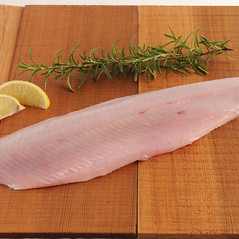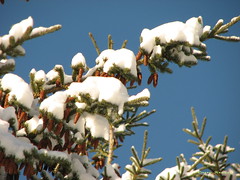 |
| Walleye Fillet (Photo credit: artizone) |
Forty-four inches of snow has fallen at the Brule Ranger Station the last two weeks in Douglas County, but to the west in Interstate Park, the St. Croix River is open and to south on Devil’s Lake, the ice is off the lake. This pattern, from north to south, and west to east, is repeated throughout the state.
Many northern waters remain ice covered, including the Upper Chippewa Basin, where 22-inches of ice remains and Forest, Langlade, Lincoln, Oneida and Vilas counties have as much or more frozen ice.
In addition to northern ice fishing opportunities, steelhead anglers have had success in Door and Milwaukee counties. Steelhead anglers near Miller Park were catching some on flies or floating spawn sacs. Walleye interest and action is also picking up in many places, including on the Oconto River were nice fish are being caught below the Stiles dam using crank baits. Walleye were also biting on the Wolf River.
Depending on where you are, and how much and how fast the snow melt, water levels are rising, or falling. Most of the snow has melted and Manitowoc County’s river by the same name is running high and fast. The Rock River in Rock County is running high. The Mississippi River in Grant County has stopped rising and the Grant and Platte rivers have returned to normal levels. In Sheboygan County, the Sheboygan River has gone down considerably in the past week.
As weather conditions improve, more turkey hunters are out in Washington County and there has been more turkey activity in Theresa Marsh State Wildlife Area, where more hunters have had success, but overall many hunters were frustrated last week.
Bears are also reacting to warm weather and hungry, so put your bird feeders up, or remove them. Western chorus frogs, spring peepers, and wood frogs have been heard in various wetlands. In Vernon County, some brown or Dekay's snakes are on the move.
Woodcock have been heard peenting in Marinette County. Across the south birders are reporting good numbers of kinglets, sparrows, hermit thrushes, and good numbers of yellow-rumped warblers.
Camping and trial conditions are sloppy, but conditions could rapidly improve with warm weather.
The prolonged spring conditions this year have produced an excellent maple syrup crop across Wisconsin in stark contrast to last season. Colder than normal conditions resulted in very high quality syrup being produced throughout the season, which translates into quantity and quality. Backyard hobbyist and large producers have been wrapping up syrup cooking in the southern and central portions of the state over the past week and the season is winding down in the north with warmer conditions predicted over the next week.









